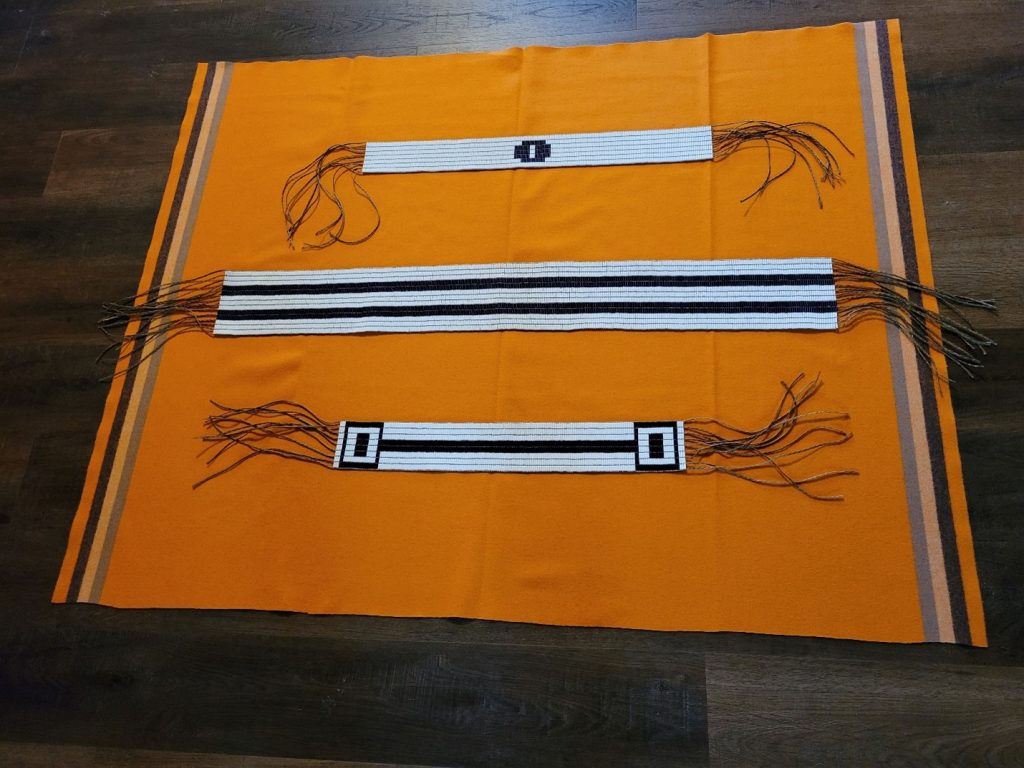Week 6: Wampum

Introduction
Viewing Assignment 1
https://drive.google.com/file/d/1QtPcchQAv_e8lOVdM_D6wWh8ykfUO9wQ/view
Initially, they made wampum belts with small clam shells called quahog. Today, they make replicas with glass beads. There are many different kinds of wampum, including peace, friendship and sharing covenants.
Before the first contact with Europeans, First Nations used these mnemonic devices called wampum to seal agreements and remember the agreed-upon words. The wampum was usually a belt or strings of shells. Two peoples would solemnize these agreements or treaties by exchanging the belt across a sacred fire after saying the words that the wampum would represent. The wampum belt carried the terms of the treaty. The smoke of the fire carried the words off to the creator. If the opposing leader accepted the belt, he ratified the agreement.
The words spoken over the wampum were solemn. The promises made were not to be broken. The wampum belts were committed to a person called the wampum keeper. He was charged with the care of the wampum and for remembering the words spoken over it. He had an assistant he trained who would take over the care of the wampum and recite the terms contained in it when he passed. First Nations would often recount agreements, at which time the keeper would bring out the wampum and repeat the terms word for word.
The Dish-With-One-Spoon wampum was a particular type of wampum generally thought to be a way of agreeing to share ancestorial land. Two First Nations would exchange this wampum, seemingly allowing one to hunt where the other lived during hunting season. However, this wampum is more of a peace agreement than a sharing agreement. Since we did not own land, we could not share it. The deal was rather than fighting during the hunting season; the two would treat each other like brothers sitting down and sharing a meal with one dish and one spoon.
Viewing Assignment 2
Viewing Assignment 3
Reading Assignment 1
Read Chapter 6 and 7 https://yorkspace.library.yorku.ca/xmlui/handle/10315/37402
Colonial Impact
Viewing Assignment 4
https://www.commonword.ca/ResourceView/82/17070
Reading Assignment 2
https://papers.ssrn.com/sol3/papers.cfm?abstract_id=3340293
Questions
According to the wampum, how do the indigenous people understand their relationship with the settlers?
How do they understand their relationship to the land?
In what way do the wampum belts ratify the Royal Proclamation of 1763?

